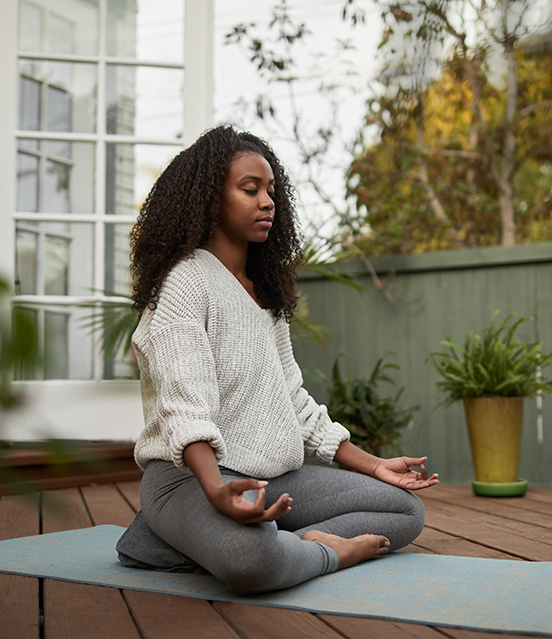Mindfulness
To be mindful means to encounter each moment with a non-judgmental and accepting attitude and to consciously turn our attention towards what we are thinking, feeling and doing at the time.
What is mindfulness?

When we go through life mindlessly, we experience eating, for example, without really tasting, and we see without really perceiving. We miss out on consciously noticing countless moments of experience because we have only partially focused our attention on them. Mindfulness is an attentive approach that promotes “becoming aware” of the present moment.
"Mindfulness means being attentive in a certain way: consciously in the present moment and without judgement."
Jon Kabat-Zinn
What characterises a mindful attitude?
Mindfulness offers us an approach to developing inner clarity and insight.
We achieve mindfulness by not evaluating our own experiences and by seeing ourselves as a neutral observer. We are used to judging everything and our thinking is strongly influenced by this. By adopting a neutral, non-judgmental attitude, we achieve a distance from our own experiences and inner peace. The essential factor is the realisation that one is evaluating. It is not necessarily a matter of avoiding judgments altogether.
In mindfulness practice, acceptance is about saying "yes" - to yourself and to everything that belongs to you, including unpleasant situations or pain. It is often difficult to accept things that we would like to be different. Instead of rigidly holding on to something, you accept things that you cannot change and reduce your own inner resistance. This does not mean that you approve of everything, but that you open yourself to the chance to change the situation for the better.
Especially in mindfulness meditation, the theme of letting go is very present. By doing various exercises, you can try letting things be as they are for as long as they are present and consciously paying attention to them, and then letting them go again afterwards. The prerequisite for this is active self-reflection and a conscious perception and acceptance of one's own thoughts and feelings or of the situation itself.

These are just a few examples of what comes into play when adopting a mindful approach. The co-founder of “mindfulness–based stress reduction”, Jon Kabat-Zinn, taught mindfulness meditation to help people cope better with stress, anxiety and challenging life situations. He says: “Letting go of things does not mean getting rid of them. Letting them go means letting them be.”


